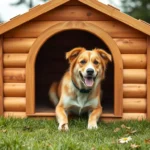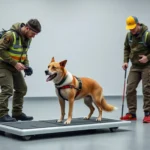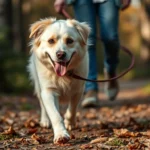
Introduction
Resource guarding is a term used to describe a dog’s instinct to protect certain items or spaces that they perceive as valuable. Understanding this behavior is crucial for any puppy owner, as it can significantly impact the puppy’s interactions with humans and other pets. Many puppies exhibit resource guarding behaviors, which can stem from a variety of factors. Addressing these behaviors early on is essential for fostering a safe and harmonious environment for both the puppy and its family.
This article will delve into the nature of resource guarding, its underlying causes, signs to look out for, and effective strategies to mitigate this behavior in your puppy. By the end, you’ll be equipped with the knowledge and tools to help your puppy become a well-adjusted member of your household.
Understanding Resource Guarding
What is Resource Guarding?
Resource guarding refers to a dog’s tendency to protect certain items, spaces, or even people from perceived threats. This behavior can manifest in various ways, including growling, snapping, or even biting when someone approaches their “treasure.” Common resources that puppies guard include:
- Food: Puppies may become possessive over their meals and treats.
- Toys: A favorite toy can spark guarding behavior, especially during playtime.
- Space: Some puppies may guard particular areas in the home, such as their bed or favorite spot on the couch.
Understanding resource guarding is the first step in addressing it effectively.
Why Do Puppies Guard Resources?
Resource guarding behavior in puppies can be traced back to instinctual behaviors derived from their ancestral lineage. In the wild, dogs needed to protect their resources to survive. However, modern domestic dogs may display this instinct due to various factors:
- Instinctual behaviors: Resource guarding is rooted in survival instincts, where dogs must protect their food and territory.
- Fear and insecurity: Puppies that have experienced trauma or inadequate socialization may be more prone to guarding behaviors.
- Previous experiences: A puppy that has had to compete for resources in a multi-pet household or an unpredictable environment may develop guarding tendencies.
Signs of Resource Guarding in Puppies
Recognizing the signs of resource guarding is critical for effective intervention. Look for the following body language cues:
- Growling: A warning signal that the puppy is uncomfortable with someone approaching their resource.
- Stiff posture: The puppy may become rigid and tense, indicating unease.
- Snapping or biting: In severe cases, a puppy may resort to aggression to protect what they perceive as theirs.
Situational triggers can vary but often include moments of feeding, play, or when the puppy is resting in their favorite spot. It’s important to distinguish between normal behavior and problematic guarding, as not all protective behaviors are concerning.
The Importance of Early Intervention
Consequences of Ignoring Resource Guarding
Neglecting to address resource guarding can lead to serious consequences, including:
- Escalation into aggression: What starts as a warning growl can quickly escalate to aggressive behavior if not managed properly.
- Socialization issues: Resource guarding can hinder a puppy’s ability to interact positively with other dogs and people.
- Long-term behavioral problems: Puppies that develop guarding habits may carry these issues into adulthood, making them more challenging to manage.
Benefits of Addressing Resource Guarding Early
Taking action to stop resource guarding behavior early can yield numerous benefits, such as:
- Increased safety: By addressing this behavior, you protect both your puppy and other pets or family members from potential harm.
- Strengthened bond: Working together to overcome challenges can enhance the trust and connection between you and your puppy.
- Well-adjusted behavior: Puppies who learn to share and trust will grow into balanced adult dogs, leading to a happier household.
Strategies to Stop Resource Guarding
Creating a Safe and Trustworthy Environment
Establishing a safe environment is crucial in preventing resource guarding. Here are some steps to consider:
- Designate feeding and play spaces: Create a specific area for your puppy to eat and play, reducing competition with other pets.
- Minimize competition: If you have multiple pets, feed them in separate areas to prevent jealousy and competition over resources.
Positive Reinforcement Techniques
Positive reinforcement is a powerful tool in training your puppy to relinquish resources without fear. Here’s how to implement it effectively:
- Introduce rewards: Use treats or praise when your puppy willingly shares or relinquishes an item. This encourages positive behavior.
- Create a routine: Consistently reward your puppy when they exhibit non-guarding behaviors, reinforcing the notion that sharing is beneficial.
Gradual Desensitization and Counter-Conditioning
Desensitization and counter-conditioning can be effective methods for helping your puppy adjust to resource situations. Here’s how to approach it:
- Start slow: Gradually expose your puppy to situations where they might guard resources, such as approaching them while they eat or play.
- Positive experiences: Pair your presence with positive experiences, like treats or praise, to create a positive association with your approach.
Teaching the “Leave It” and “Drop It” Commands
Teaching your puppy commands like “leave it” and “drop it” is essential for preventing resource guarding. Here’s how to do it:
- “Leave It” Command:
- Hold a treat in your hand, allowing your puppy to see it.
- Close your hand when they try to grab it.
-
When they back away, reward them with a different treat.
-
“Drop It” Command:
- Offer a toy your puppy enjoys while holding a treat in the other hand.
- When they drop the toy to get the treat, reward them immediately.
- Repeat until they consistently drop the toy on command.
Seeking Professional Help
If your puppy’s resource guarding behavior is severe or unmanageable, seeking professional help may be necessary. Consider consulting a professional dog trainer or behaviorist who specializes in aggression and resource guarding. Additionally, group training classes can provide valuable socialization opportunities for your puppy.
Common Mistakes to Avoid
Misinterpretation of Guarding Behavior
One of the most common mistakes is misinterpreting guarding behavior. It’s essential to understand the difference between playful behavior and genuine resource guarding. Avoid punishing your puppy for guarding, as this can exacerbate their fear and insecurity.
Inconsistent Training Approaches
Inconsistency in training can confuse your puppy and hinder their progress. Ensure all family members are on the same page regarding training methods. Consistent reinforcement will help solidify desired behaviors and create a more harmonious environment.
Conclusion
Addressing resource guarding in puppies is critical for their development and the overall well-being of your household. By understanding the behavior, recognizing signs, and implementing effective strategies, you can help your puppy overcome guarding tendencies. Remember to be patient and consistent in your training efforts, as building trust and a strong bond takes time. With dedication and the right approach, you can guide your puppy towards becoming a well-adjusted adult dog, free from the anxieties of resource guarding.









